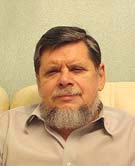Contents: 2024 | 2023 | 2022 | 2021 | 2020 | 2019 | 2018 | 2017 | 2016 | 2015 | 2014 | 2013 | 2012 | 2011 | 2010 | 2009 | 2008 | 2007 | 2006 | 2005 | 2004 | 2003 | 2002 | 2001
2011, 3
Acoustics of the Opera House in Samara
language: Russian
received 14.01.2011, published 21.02.2011
Download article (PDF, 660 kb, ZIP), use browser command "Save Target As..."
To read this document you need Adobe Acrobat © Reader software, which is simple to use and available at no cost. Use version 4.0 or higher. You can download software from Adobe site (http://www.adobe.com/).
ABSTRACT
The results of acoustic design of the opera house for 1100 seats are presented. The hall has been fully reconstructed and its form and inner surfaces have been changed. Acoustic design has been done with the use of computer simulation. The results of acoustic measurements, which were carried out in the hall after reconstruction, are presented. The analysis of these results and the initial subjective estimation confirm a good sound quality in the hall.
Key words: architectural acoustics, opera house, acoustic measurements.
10 pages, 8 figures
Сitation: M. Yu. Lannie. Acoustics of the Opera House in Samara. Electronic Journal “Technical Acoustics”, http://www.ejta.org, 2011, 3.
REFERENCES
1. СНиП 2303-03. Защита от шума. М., 2004.
2. Beranek L. Concert Halls and Opera Houses. Second Edition. Springer. New York. 2004.
3. ISO 3382-1:2009. Acoustics. Measurement of room acoustic parameters. Part 1. Performance spaces.
4. IEC 60268-16. Sound system equipment. Part 16: Objective rating of speech intelligibility by speech transmission index.
 |
Michael Lannie graduated from the Moscow Institute of telecommunications in 1972. Since that time he has been employed in the Research Institute TV and Radio, Moscow, as head of the acoustic laboratory. His main job deals with acoustic design of television and radio studios. He received a Ph.D. for research on a new method for measuring room acoustics. Recently he worked as head of the acoustic laboratory of the Moscow Research and Design Institute for Culture, Leisure, Sports, and Public Health Constructions. He is the designer of acoustic solutions of many studios and public halls built in Russia and the author of more than 100 papers on architectural acoustics, noise control and sound reinforcement. Dr. Lannie is a member of the Russian Acoustic Society, AES and ASA. Recently he is the vice-chairman of the AES Moscow section and is responsible for the section activity in room acoustics and sound reinforcement. e-mail: mlannie(at)mail.ru |
